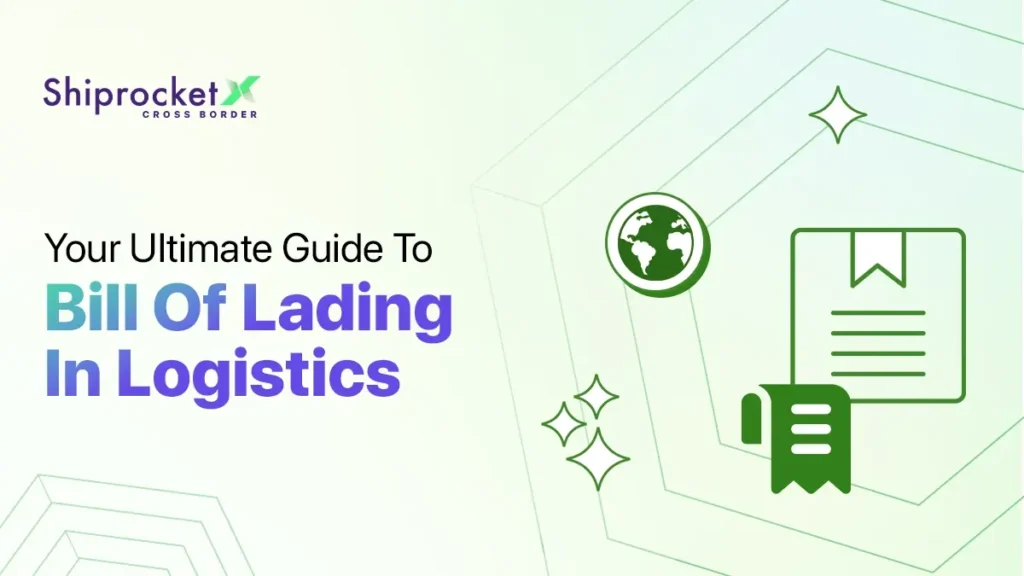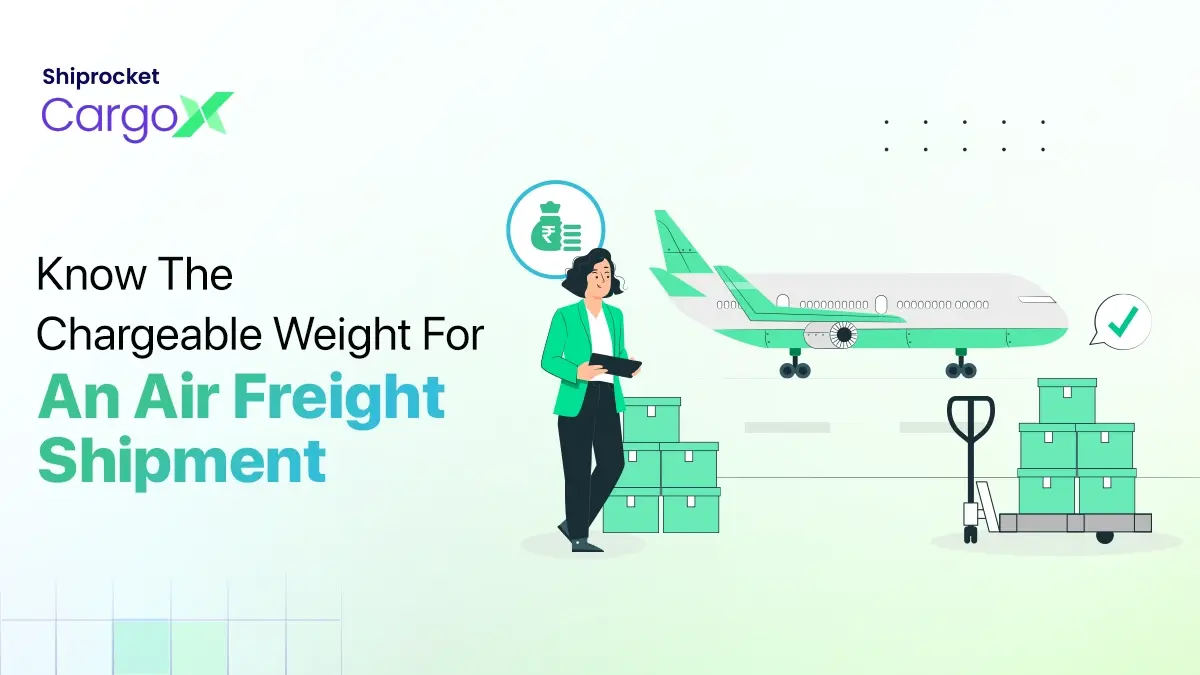Bill of Lading: Meaning, Types, Example and Objectives
A significant part of business logistics is moving goods from the point of origin to the customer using documents that establish proof of ownership at every stage. While there are many such transitional documents, a bill of lading is the most important of all shipping documents. A bill of lading is a legal document that provides evidence of the shipment.

In this quick guide, we will explore the need for bills of lading, its types, examples and significance. Let’s delve in!
Understanding Bills of Lading
A bill of lading is also called a BL or BoL. It is a legal document issued by the transportation company to shippers. It contains a number of details – type of goods, quantity of goods, and the destination to which it has to be carried.
Apart from being a document of proof of ownership of goods being transported, it becomes a shipment receipt when the agent delivers it at the given destination. As a result, this document must travel with the shipped goods and has to be signed by officials at the carrier, the shipper, as well as the receiver.
Below is a visual representation of a bill of lading:
To summarise, the bill of lading is regarded as proof of ownership/legal document in the following instances:
- BL is a title to goods described
- BL is a receipt of shipped goods
- BL is an agreement stating the terms and conditions for the goods to be transported
Given the legal importance of bills of lading, responsible personnel must be appointed to handle them at every stage of the logistics process.
Different Types of Bills of Lading
Considering that businesses deal with a broad range of products that move across borders, bills of lading are created for specific documentation purposes. These are:
- Inland BL: It is the agreement between the shipper and transporter to move goods overland, often to ports for international shipping.
- Ocean BL: When products need to be transported internationally by sea, the Ocean BL is needed. It serves as the receipt to the shipper from the carrier and as a contract of transportation.
- Negotiable BL: This type of BL is different from uniform and other types of BL as it allows the contract of carriage to be transferred to a third-party provider.
- Claused BL: This is a unique type of BL as it describes the damages in delivered goods or a shortfall. It usually implies financial loss as the exporter is penalised for non-compliance with the stated contract.
- Clean BL: This BL is issued by the product carrier to validate that packages are undamaged, comply with the number of units in the contract, and have no deviations in quality.
- Uniform BL: This is a BL which signifies the agreement between the exporter and carrier with respect to the products, items or property being transported.
- Through BL: This particular type of BL allows goods to be transported locally and overseas. It doubles as a cargo receipt, carriage contract and, in some exceptional cases, as the title for the products.
Considering that every type of BL has its own implications, businesses should choose the appropriate bills of lading. An incorrect BL could lead to delivery delays, difficulty in locating goods, or loss during transportation.
Bill of Lading in Action: An Example
To better understand the actual working of bills of lading, let us consider the example of a fictitious business named A1Foods that receives shipments of fresh meat and fish six times a week. The process is as follows:
- The manager will first determine the daily requirements of these products.
- Fills out a purchase order (PO)
- Ensures the owner signs the PO after a thorough review
- Emails it to the vendor
- The vendor procures the supply.
- Issues bill of lading to a representative from the carrier
- Issues bill of lading to a representative from the carrier
- The carrier delivers the meat and fish to A1 Foods.
- The manager compares delivery with the bill of lading for product details like units, type of fish/meat and other details
- The manager forwards it to owners if bills of lading match
- The owner reviews and approves payment to the vendor
Thus, a bill of lading is a process which has several checks and balances to ensure a quality supply of goods and payment. In the example, the owner reviews the PO and BL to make the payment. If the two documents do not match, then the manager requests the vendor for an explanation. The third employee can verify the payment services for accuracy and prevent errors.
Purpose Behind a Bill of Lading
The bill of lading is the most important document to process shipments accurately. Here’s why:
- Firstly, it establishes the contract terms between the carrier and the shipping company. It holds legal binding in matters of dispute.
- In addition, it creates a hierarchy of control within an organisation to deal with placing orders. It effectively prevents pilferage, theft or misuse of company trust in managers placing the orders.
- Thirdly, it acts as a receipt of shipped products.
The Functions and Objectives of a Bill of Lading
The simple components of bills of lading establish the functions and objectives of using such a document. The bill describes in detail the goods that are being transported.
Lading is the process of placing described products into ship storage. BoL can be handwritten, printed, or in digital forms that outline the conditions and terms for transportation. It includes the type of the goods and the quantity of goods being sent to the destination as well as any special instructions in dealing with the goods.
The objective of issuing BL is to establish an agreement between the carrier and the shipper regarding the receipt of goods. It also records the condition of the goods at the time of shipping. As a result, BoL acts as a valid document to prove the quality of shipped goods.
A Closer Look at the Contents of a Bill of Lading
Bills of lading typically include the following contents:
- Name and address of the shipper
- Name and address of the consignee
- Date of delivery
- City/port of delivery
- Type of transport
- Type and quantity of goods being shipped
- Type of packaging
- Shipping date and estimated date of arrival
- Shipping route (including stops/transfers)
- Item description
- Terms and conditions of the transportation (including special handling instructions)
Bill of Lading vs. Invoice: How Do They Differ?
| Points of Distinction | Bill of Lading | Invoice |
| Purpose | A legal document that governs the transportation of goods | A commercial document listing the products or services provided to a customer |
| Issuer | Carrier | Seller |
| People Involved | Shipper, carrier, and consignee | Seller and purchaser |
| Contents | Description of goods, quantity of goods, destination, and any special instructions. | Type of product, price per unit, number of units, total amount, taxes, and buyer contact information. |
Conclusion
The different types of bills of lading and their purposes demonstrate their significance in the logistics industry. They hold critical legal importance as a contract that establishes the transaction between the transport company and a shipper to move specific quantities of goods to a prescribed destination. Secondly, it becomes a vital receipt of shipment, and thirdly, it establishes a control hierarchy to prevent theft of goods during transportation.
If you are a business with a well-established local network and want to expand your customer base internationally, bills of lading become essential legal documents for your expansion. You must understand the workings of the different types of bills of lading and choose the appropriate type when you engage in international shipping.
An airway bill is a document for goods shipped by an international air courier. It contains detailed information about the shipment and a tracking process to identify the shipment’s status during transport.
As per industry standards, three bills of lading are typically issued. One is for the shipper, the second for the consignment, and the third for the banker.
No. When an original bill of lading is lost, destroyed, or stolen, a new bill can only be generated once the original is found.





